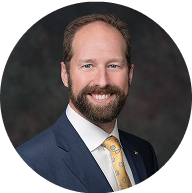Real Question from a Federal Employee
Hello, I have a question. I’m a few years out from retiremen, how can I be sure I’m financially ready to stop working when the time comes? What to consider? Thank you. – Gerald
Federal employees working under the Federal Employees Retirement System (FERS) need to understand how their retirement benefits work. This article explains key concepts in simple terms and provides helpful resources.
What Is FERS?
FERS is the retirement plan for most federal workers hired after 1983. It has three main parts:
- Basic FERS Pension: A monthly payment after retirement based on your years of service and salary
- Social Security: Benefits that most U.S. workers receive
Thrift Savings Plan (TSP): Similar to a 401(k), where both you and the government contribute money
- Basic FERS Pension: A monthly payment after retirement based on your years of service and salary
Death Benefits While Still Employed
If you pass away while still working for the government, your family may receive certain benefits.
If you’re covered under FERS and die while employed:
- Your spouse may receive a Basic Employee Death Benefit payment
- Your spouse could also get a monthly survivor benefit if you met service requirements
According to OPM, if you worked at least 18 months and are married, your surviving spouse may qualify for both benefits. The monthly payment is based on how long you worked and your salary.
Military Service Credit
If you served in the military before becoming a federal employee, you may be able to “buy back” your military time. This means paying a deposit to count that service toward your FERS pension.
Be careful! If you die before completing this buyback, your survivor might not get credit for that military time, which could mean a smaller survivor benefit.
Survivor Benefits at Retirement
When you retire, you can choose to provide a survivor benefit for your spouse. This makes your pension smaller while you’re alive, but your spouse would continue receiving payments after your death.
There are two main options:
- Full survivor benefit: Your spouse gets 50% of your pension
- Partial survivor benefit: Your spouse gets 25%
If you don’t want to provide either benefit, your spouse must sign a form agreeing to this decision. Without this signed agreement, OPM will automatically provide the full benefit and reduce your pension accordingly.
Divorce and Your Benefits
Divorce can affect how your retirement benefits are handled. A court order (called a COAP) can divide your pension or survivor benefits with your ex-spouse.
Even if you remarry, your current spouse might not receive full benefits if your divorce settlement gives certain rights to your ex-spouse.
Why This Matters
Understanding your benefits now helps protect your loved ones later. Your decisions about military buyback and survivor benefits have long-term effects.
It’s important to:
- Keep your beneficiary forms updated
- Understand how survivor benefits work
- Talk to a retirement expert if you have questions
Conclusion
Understanding your federal retirement benefits under the Federal Employees Retirement System (FERS) is important for making smart decisions for your future and your family. FERS includes three main parts: a basic pension, Social Security, and the Thrift Savings Plan (TSP), which work together to support you in retirement.
If you pass away while still working, your spouse may be eligible for a Basic Employee Death Benefit and a monthly survivor benefit, as long as you meet certain service requirements. If you have military service, you can buy back that time to increase your pension, but your survivor might not get credit for it if you pass away before completing the buyback.
When you retire, you can choose a full or partial survivor benefit for your spouse, which affects the amount of your pension and what your spouse receives after your death. Divorce can also impact how your benefits are divided, depending on court orders.
To protect your loved ones, keep your beneficiary forms up to date and understand how survivor benefits work. If you have questions or a complicated situation, talking to a retirement expert can help you avoid mistakes and make the most of your benefits.
References:
- U.S. Office of Personnel Management. (n.d.-a). FERS information. https://www.opm.gov/retirement-center/fers-information/
- U.S. Office of Personnel Management. (n.d.-b). Death benefits. https://www.opm.gov/forms/pdf_fill/sf3104b.pdf
- U.S. Office of Personnel Management. (n.d.-c). Creditable service. https://www.opm.gov/retirement-center/csrsfers-handbook/
- U.S. Office of Personnel Management. (n.d.-d). Survivor elections. https://www.opm.gov/retirement-center/publications-forms/pamphlets/ri90-1.pdf

ABOUT THE AUTHOR
Micah Shilanski, CFP®, is a distinguished financial planner known for his deep commitment to providing exceptional advisory services to his clients. As the founder of Plan Your Federal Retirement, Micah has dedicated his career to helping federal employees understand and optimize their benefits to ensure a secure and prosperous retirement. His expertise is widely recognized in the industry, making him a sought-after speaker and educator on financial planning and retirement strategies.
Micah’s approach is client-centered, focusing on creating personalized strategies that address each individual’s unique needs. His work emphasizes the importance of comprehensive planning, incorporating aspects of tax strategy, investment management, and risk assessment to guide clients toward achieving their financial goals.Micah Shilanski 00:00
So, you’ve attended classes, you’ve listened to our podcast, you’ve read great articles, but how do you know if you are financially really ready to retire? If you ever wondered what the answer to that question is, make sure you stay tuned for this FERS Federal Fact Check. Hi. I’m Micah Shilanski, and welcome to the FERS Federal Fact Check. We love getting questions from people just like you, our listeners, and helping answer those questions. Why? Because we have a goal of helping another 1 million federal employees prepare for retirement, and we can’t do that without your help. So, Gerald was kind enough to shoot in a question to us, and let’s listen to what he has to say. Says, Hello, my name is Gerald, and I have a question. I’m a few years out for retirement. How can I be sure I am financially ready to stop working when the time comes? What should I consider? Thank you, Gerald, that is such a great question, right? Why do I think it’s such a great question? One, because it’s your guys’ questions, and I love answering them. But number two, cash flow is the heartbeat of retirement. Now, I know I say this all the time, I say it all the time, but it’s so true. And this is something that comes up, not only with our pre retirees, not only with our clients that have just retired, but our clients have been retired well over 20 years, cash Flow still comes up as a constant conversation, and so the best way to know if we’re financially ready to retire is, let’s take that bad boy for a test drive, right? We’re going to test drive retirement. I want to sample retirement as much as you possibly can while you’re still working, and let’s see if it actually works. What does that mean? Let’s say right now, you’re spending $10,000 a month. It’s like 10 fingers, so it makes kind of easy, right? You’re spending $10,000 a month, and that’s your net, that’s how much you’re spending. I saw your gross income, right? I only want to look at how much you’re spending. This is why tracking your spending from a cash flow, not from a budget standpoint, from a cash flow standpoint, is really, really important. So how do we track a spending from a cash flow standpoint? Well, in my world, I kind of boil it down to five basic areas. I’d like my clients to track household, travel, entertainment, medical and kids, maybe grandkids, right? Those are the five categories. You can have different categories. Do not have more than five categories. Why? Five is manageable? Less is okay, right? You need at least three, no more than five, somewhere in between. Here’s one of the things that happens with cash flow tracking that becomes such a snafu for a lot of people, and by the way, guilty of it right here in my own personal finances is, is we have one credit card, and we, my wife and I, put all of the charges on one credit card, then all of a sudden, this month, we’ve overspent whatever that dollar amount is, let’s say it’s 10,000 we’re supposed to be spending, we’re well over that 10,000 that particular month. Well, why we look at the credit card like, oh, it’s because we booked that ticket, you know, to where in Hawaii, right? We’re gonna go to a nice destination. So we booked those tickets to Hawaii. That’s why our credit card was $15,000 this month and not 10,000. Now, the Hawaii ticket was only two grand, by the way, right? So let’s do some quick math. I was at 15,000 so it’s 5000 over, 2000 of that was for the Hawaii ticket. Where was that other three grand? Miscellaneous stuff that just came up that I spend money on, but I’m going to overlook it, or I’m going to blame it on something else. So I need to add some transparency to where my money goes. This is why we break it down into these different categories. And I know we have separate videos that kind of talk about those in depth, but then I can really look at each one of them and say, Hey, am I overspending? And if so, in what category am I overspending, now next month, I can get back on track with where I should be. So the number one thing is cash flow. How much a month are we going to be spending in retirement? And are we living on that today? That’s the first thing I want to do. Second thing I want to do, simulate retirement income as much as possible. So again, let’s say you and your wife are both working, and that’s how you guys are getting your wonderful 10,000 your wonderful $10,000 a month coming in. And let’s say that when you retire, Gerald as a federal employee, you’re gonna retire and you’re gonna have a $3,000 a month pension. And let’s say your FERS supplements gonna be $4,000 take home, right? So your $4,000 a month take home coming in, okay? Well, the goal is 10, and you have four coming in, right? Let’s say your spouse is gonna have another $2,000 coming in from whatever source of income. Okay, so now we’re at 6000, right? But we’re still short $4,000 a month. So here’s what I would suggest, depending on how your investments are set up, let’s say you’re over 59 and a half. Ideally, what I would do is I’d have a 100% of your pay, especially if you’re making more than 10,000 a month. Your ideal retirement income, I want 100% of your pay going to a separate account, and then once a month, I want that income coming into your account. Well, what happens? Well, when you’re retired, you’re only paid once a month, right? The first of the following month is when your retirement goes into effect. That’s when your pension is going to be paid. You’re not getting paid every two weeks. So I want to start getting a monthly check coming in. And maybe we make one check, $6,000 a month, because that’s what you’re going to get from pensions at the beginning of the month. And then let’s say that other 4000 we simulate a retirement distribution. Maybe we have an investment account, non retirement so we don’t have to worry about taxes, right? And we start taking money out of a non retirement account, and we start supplementing it. Now you might be saying, Micah, at the end of the day, my paychecks give me 10,000 a month. Now I’m playing this funny monkey game, and I’m making my life more complicated. Why would I do that? Right if I’m only spending 10,000 a month? Why is it important? Well, sometimes our clients have a little bit of a mental issue being like, hey, are my investments going to be enough? Are these going to be set up the right way? How are these things going to be done? And the more we simulate that, one to two years before retirement, the smoother our clients move into a retirement mode. They get used to getting paid once a month. They get used to the paychecks not being the same, right? They get used to these different changes that are going to take place. And they realize, hey, my investments really can generate this income that I’m supposed to have. Hey, I really can live on this retirement income. And if you’re making more than 10 a month, but 10 a month, all your spend you’re spending, well, then we’re banking all of that other money, and it doesn’t even hit your checking account. You get used to that retirement check coming in, so simulate retirement as much as possible. Now, if you’re going to retire at a younger age, maybe all of your money is pre tax. We can’t do it the same way, but work the best way you can right? Now, if you’re not working with an advisor, make sure you talk to someone about this before this before we start moving investment money around. How do taxes work? How to penalties work? Make sure you’re not you know, unduly penalized for trying to set this up, because there are ways to do it without penalties. So make sure you’re talking to someone who really understands that. But know what your cash flow is. Simulate retirement as much as possible. And I say the third one on the investment strategy. Don’t get greedy, right? Our investment strategy, it’s kind of boring. Quite frankly, it’s not, you know, super pizzazz and sparkly with all these fireworks going off. But our clients really like it, because we don’t see a lot of that excess volatility that sometimes other people see. We want a retirement strategy. We want an investment strategy that just works, right, the exciting part of your life should not be, oh my gosh am I going to have money in retirement or not because the stock market’s volatile? That should not be where your excitement comes from, right? We want a simple strategy that works for the long term, so make sure you’re doing that in implementing it well in advance of retirement. And don’t get greedy. When markets are up take your profits, when markets are down, have a war chest. Have money on the sides to weather those downturns, because they will happen again and again. I may not know why they’re going to happen. I may not know when they’re going to happen, but I know they’re going to happen, and I want my clients prepared for that. I want you prepared for that as well. So I hope this video has been a benefit. Get this information out there. We’re really trying to grow and help you federal employees as much as we possibly can. And if you have a question that you’d love to get answered, then make sure you submit it to us go ahead and calls in, you can leave it on our voice recording. We’ll play your message, and then you might be featured to the next FERS Federal Fact Check. Until next time, Happy Planning.




